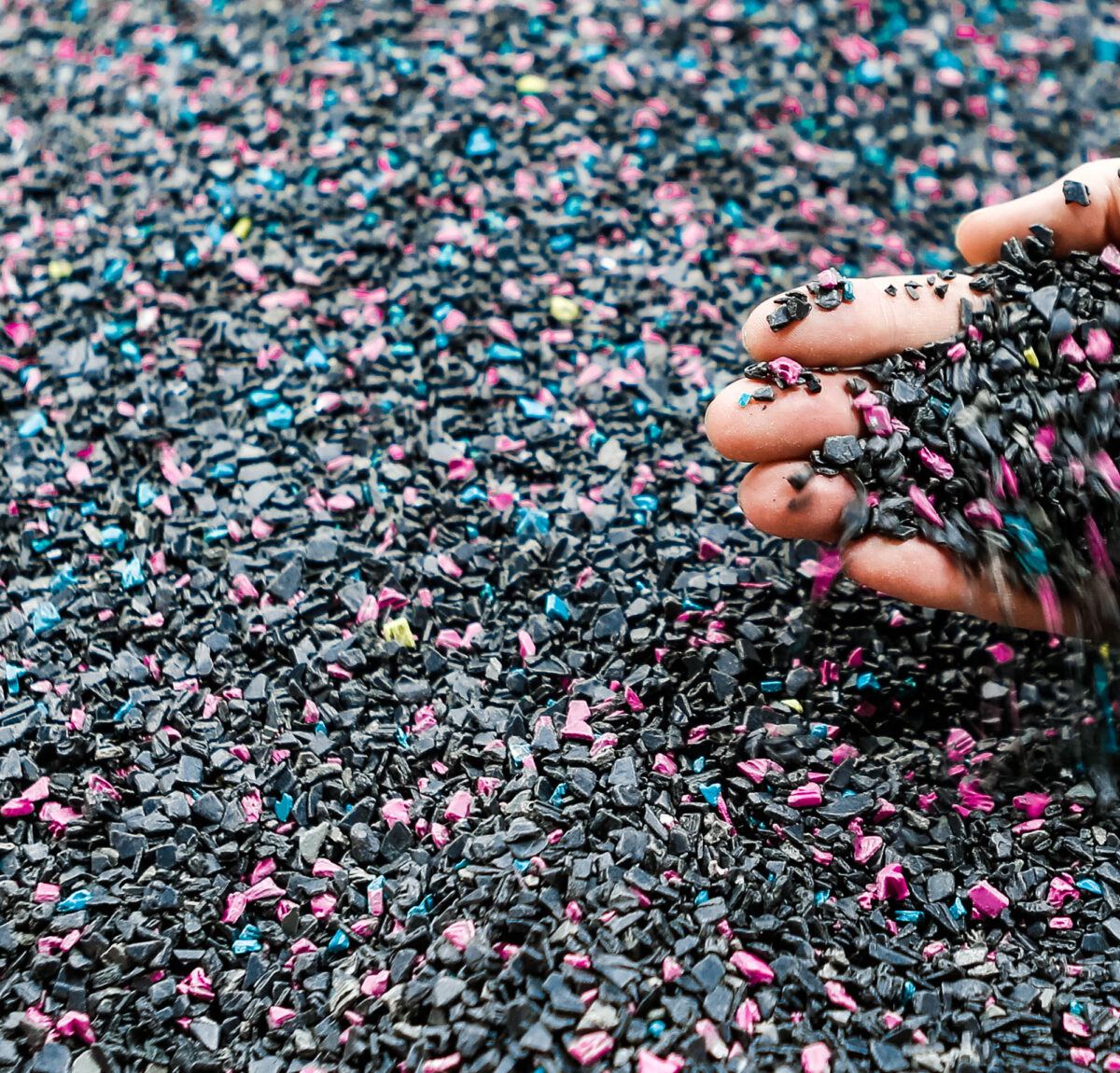Table of Contents
Part 1 — Plastics
1.1 The Canadian Plastics Industry
1.2 Recycling Plastics
1.3 The Plastics Industry has an Opportunity
Part 2 — The Pillars of Plastic Recycling
2.1 Closed Loop and Closing the Tap
2.2 Collaboration
2.3 An Innovative, Automated Process
2.4 Consumer Education and Reliable Eco-Labels
Part 3 — Embracing the Opportunity
Download PDF Version of EbookPART 1 Plastics
In the modern world, plastics are all around us. Plastics are found throughout the cars we drive, the clothes we wear, and the appliances we use at home.
In Canada, plastic products are in demand in most sectors of the economy, with approximately 4,667 kilotonnes (kt) of plastics introduced into the domestic market every year. Three categories — packaging, construction and automotive — show a particular appetite for plastic, accounting for 69 percent of Canada’s use in end products.1 Plastics also play a large role in consumer electronic products world-wide — most of our smartphones, laptops, computer mice and printers. There’s a good chance you’re holding a device made with plastics while you read these words.
Canada’s plastic industry has come a long way since mass-produced plastics came into being over 100 years ago. Over this period, the industry has successfully developed:
- Advanced production methods
- New product categories
- Stronger and more versatile plastics
Even many bank notes — what we call “paper money” — is now a polymer.
Recycling plastics is a crucial step in the industry’s evolution. However, recycling is in its early stages as industry leaders continue innovating and introducing new technologies and practices.
1.1 The Canadian Plastics Industry
The Canadian plastics industry is huge, employing 93,000 people across 1,932 organizations.2 The work of organizations within the industry covers every stage of the plastics lifecycle:
- Producing raw materials (creating virgin plastics resins)
- Manufacturing plastic products (car parts, electronics,
household appliances) - End-of-life management such as recycling or disposal
The plastic industry represents a significant economic driver for our economy. Total annual sales are estimated at $35 billion per year. That amount is divided up as $10 billion for creating the plastic resins and $25 billion for plastic product manufacturing.3
1.2 Recycling Plastics
Plastics recycling is growing. Each year brings an increasing number of programs, companies and technologies promoting the collection and recycling of used plastics. Many municipalities have household recycling or “blue bin” programs, while some product
manufacturers have “return programs” to collect their used products and stream them into a recycling process.
Plastics collected and brought into recycling centres mostly include the following materials:
- Polyethylene Terephthalate (PET) — Used in drink bottles, food packaging, consumer electronics, appliance components and more
- Acrylonitrile Butadiene-Styrene (ABS) — Widely used in the automotive, electronic appliance and consumer electronic industries
- High-Impact Polystyrene (HIPS) — A tough plastic, easy to thermoform for machine housing and parts, shelving units, handling trays and promotional signs
- Polycarbonate (PC) — Used in electronic components, digital media discs, automotive or aircraft parts
- Polypropylene (PP) — Used in packaging applications, consumer goods like housewares and toys, automotive applications, fibers and applications
However, there is a long way to go. A 2019 study found that 87 percent of plastic waste still
ends up in landfills or the environment.4
Used plastics leaking into the environment pose a significant environmental threat. Millions of tons of post-consumer plastics are already polluting the Earth’s oceans. In fact, many of those plastics come from inland pollution — 80% of the ocean’s plastic come from 1,000 rivers.5
87% of plastic waste ends up in landfills or the environment.
“Economic Study of the Canadian Plastic Industry, Markets and Waste.” Summary Report to Environment and Climate Change Canada. 2019
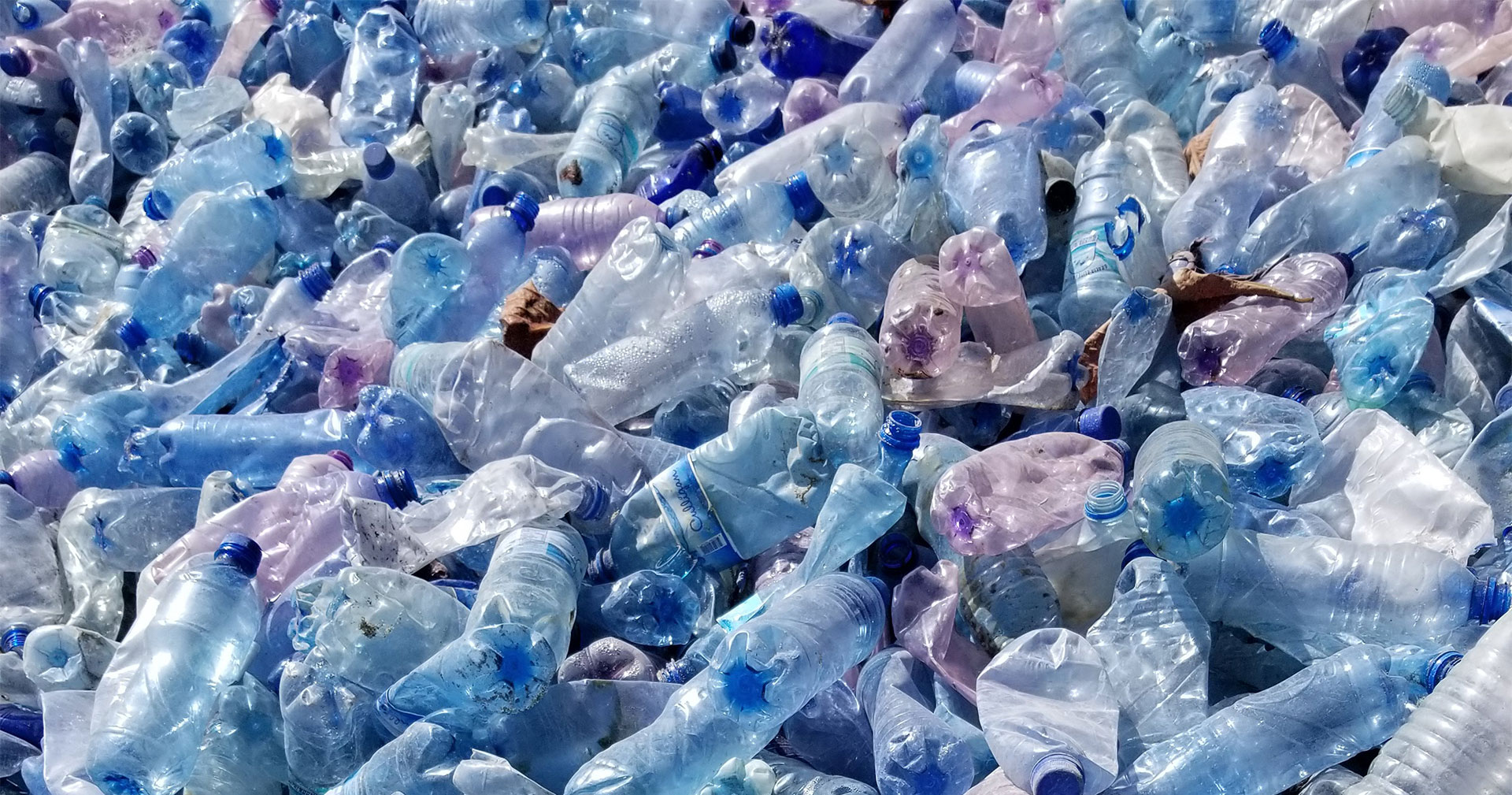
1.3 The Plastics Industry has an Opportunity
With 87 percent of plastic waste still ending up in landfills or the environment, the plastics industry has a tremendous opportunity to revolutionize the way plastics are made, used and disposed of.
The plastics industry has been creating virgin plastics for more than a hundred years. Lavergne believes the world may have already created enough virgin plastic resins to meet our entire future needs.
Meeting this opportunity requires making solid advancements in key areas, including:
- Closed Loop Recycling
- Collaboration
- Innovation
- Consumer Education and Reliable Eco-Labels
It’s a comprehensive initiative requiring input from industry, consumers, households and governments, but it has the potential to transform the way we think about our environment and economy.

The Canadian plastics economy is mostly linear. An estimated 9% of plastic waste recycled, 4% incinerated with energy recovery, 86% landfilled, and 1% leaked into the environment.
“Economic Study of the Canadian Plastic Industry, Markets and Waste.” Summary Report to Environment and Climate Change Canada. 2019
PART 2 The Pillars of Plastic Recycling
Sustainable plastics recycling is built on some key industry practices.
2.1 Closed Loop and Closing the Tap
The traditional economy is linear. In the linear economic model, products are made, purchased, used, then disposed of.
For the plastics industry, the traditional linear model means virgin plastic resins are produced, then a manufacturer uses them to create products. At the end of their useful lives, those materials are discarded in landfills, or in some rare cases, re-used for another purpose.
The circular economy is different. In a circular economy, products are produced, then at the end of their useful lives, they are re-used as raw materials for another process.
The Ellen Macarthur Foundation says, “A circular economy is based on the principles of designing out waste and pollution, keeping products and materials in use, and regenerating natural systems.”
Within a circular economy, we talk about the “Closed Loop.” A Closed Loop ensures post-consumer materials do not end up in landfills. Instead they are given new life as raw material for use in new products.
What is the circular economy?
In some cases, an industry or company can create a “pure” closed loop where products reach the end of their useful lives then come back as the raw materials for the same products. Electronics leader HP oversees a comprehensive return program where HP ink cartridges can be returned and recycled. The recycled plastic from the ink cartridges, along with plastics from other sources such as drinks bottles and other ocean-bound plastics, can be used as a raw material in the manufacturing of new HP ink cartridges.
Achieving a pure Closed Loop recycling process takes collaboration, technology and vision.
2.2 Collaboration
The future of plastics recycling will be based on strong and genuine partnerships and collaboration with leading companies working together in a shared vision of creating great products, enhancing sustainability and advancing a healthier future for our planet.
In 2020, Lavergne announced the inspiring results of two collaborations.
The first announcement outlined how consumer electronics leader HP uses recycled plastic resins from the Lavergne Haiti operation to create laptops and other devices.
In the second announcement, Keurig Dr Pepper (KDP) Canada announced its new coffee makers were made with Lavergne’s PCR plastics. The announcement launched:
- Keurig ® K-Mini ® coffee maker in black made with at least 20% PCR plastic
- K-Mini Plus ® coffee maker in black made with at least 30% PCR plastic
Both coffee makers are made with Lavergne’s matte black plastics.
The KDP-Lavergne partnership progressed quickly over two years: 18 months of plastic development work followed by six months to hone the use of Lavergne’s recycled plastic resin in two of Keurig’s best-selling products.
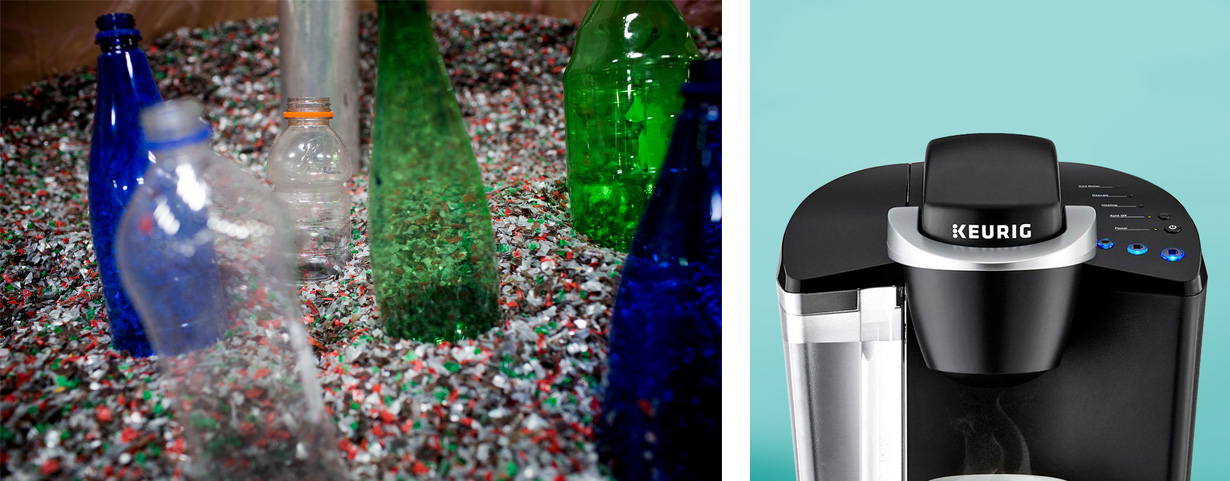
2.3 An Innovative, Automated Process
Plastics recycling builds on the latest technology, project management and quality assurance practices from manufacturing, engineering, chemistry and other sectors.
Lavergne’s innovative process uses a modern, cutting-edge process for turning post-consumer plastics into resins for use in new products.
The plastic recycling process at Lavergne’s Montreal facility is entirely automated.
When the feedstock enters the Lavergne facility, it follows a transformative process of turning old used plastics into new Post-Consumer Recycled (PCR) resins.
1. Plastic Care Centre
The Plastic Care Centre truly cares for the old plastics. Those used plastics are not headed for landfill. In the Plastic Care Centre, we care for them, treat them and work to restore them. We do it all without additives. At this point we’re building on the strength of those existing plastics by cleaning and separating by type and color.
In the Plastic Care centre, the feedstock goes through an automated process of:
- Shredding — The feedstock is shredded into small flakes
- Cleaning — The flakes are thoroughly washed, rinsed and dried
- Separating — The plastic flakes are separated by type and colour. Lavergne’s automated system can identify and sort the individual flakes by plastic types, and also by colour, as black, white and “mixed” coloured plastics are automatically separated
Lavergne’s quality control processes ensure the plastics are properly segregated, all contaminants are removed, and the flakes are sorted.
Once completed, the cleaned plastic makes its way to one of 16 mixing silos where they are mixed to ensure homogenization.

2. Additive Mixing Centre
In the Additive Mixing Centre, the base polymers are melted and blended with additives — Lavergne’s “secret sauce” — to rebuild and strengthen the molecular chain. The additives ensure the new resin meets specifications include performance properties and color matching.
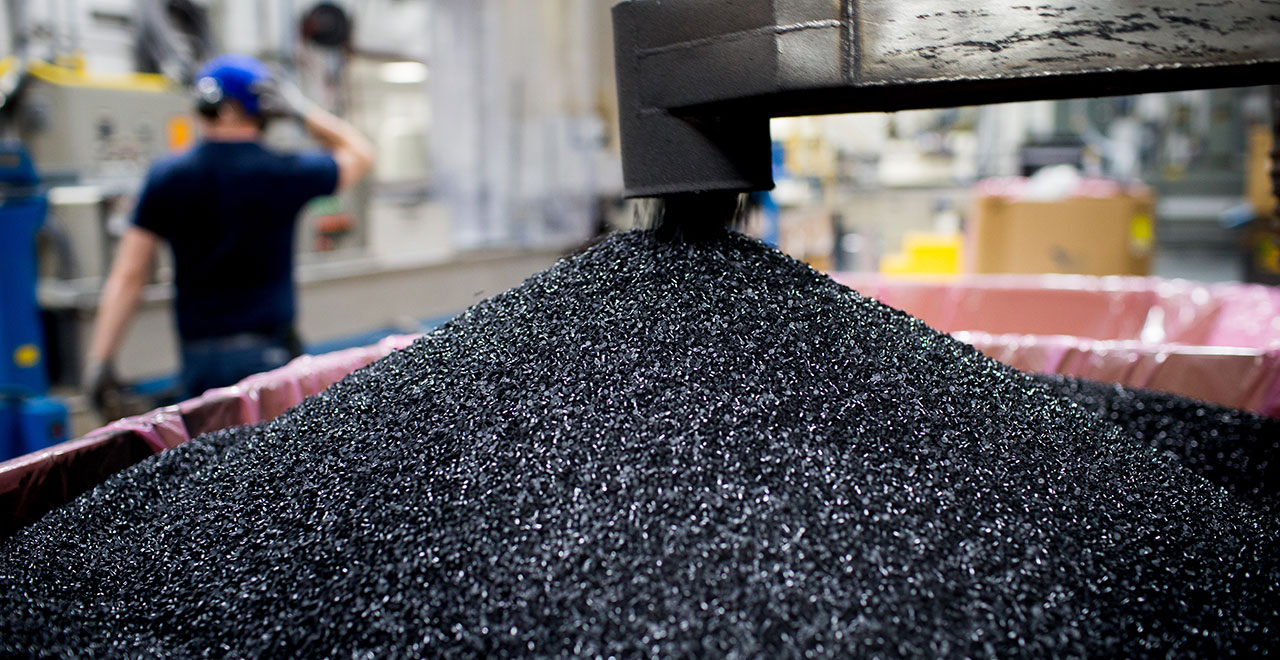
3. Reactive Compounding Centre
During the reactive compounding phase, the material is melted together with additives. The compound goes through an extrusion process and is then “pelletized,” or turned into pellets.

2.4 Consumer Education and Reliable Eco-Labels
Buyers of plastic resins and plastic products — both product manufacturers and end-users — are increasingly committed to making sustainable choices by seeking products made from recycled plastics. However, it’s not always easy to know how much of a product is truly made with recycled materials. Buyers need signals to help them feel confident that the products they’re purchasing meet their sustainability goals.
That’s where an important “signal” — like a third-party validation or eco-label — is effective. Those signals are best when they come from an independent, credible body.
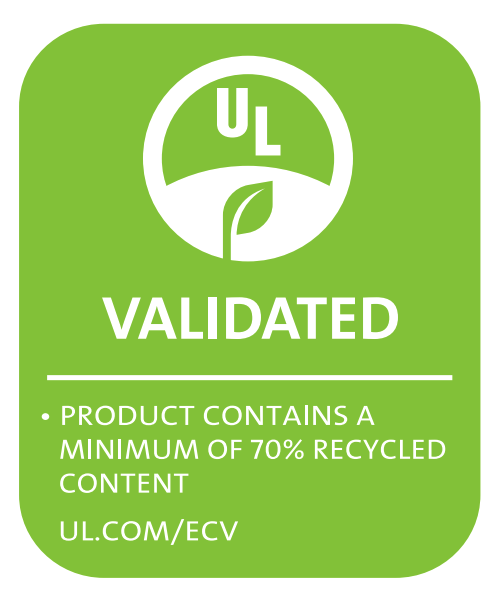
UL 2809 ENVIRONMENTAL CLAIM VALIDATION PROCEDURE (ECVP)
Working collaboratively, Lavergne and HP were the first organizations to successfully meet the validation criteria for the UL 2809 Environmental Claim Validation Procedure (ECVP) for Recycled Content. The UL 2809 Validation evaluates the amount of recycled content in products, including:
- Post-consumer recycled content
- Pre-consumer (post-industrial) recycled content
- Closed loop recycled content
- Total recycled content
An added bonus of the HP-Lavergne collaborative work leading to the UL 2809 validation is much of those recycled materials are Ocean-Bound Plastics (OBP) — post-consumer items like drink bottles and food containers making their way through the lakes, rivers and canals towards the ocean.
Thanks to this third party procedure, consumers can have full confidence that specific HP products contain a validated percentage of recycled plastic in the form of high-quality recycled parts.
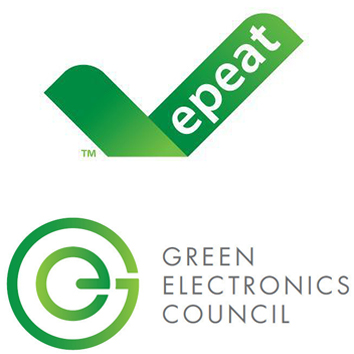
ELECTRONIC PRODUCT ENVIRONMENTAL ASSESSMENT TOOL (EPEAT)
The Electronic Product Environmental Assessment Tool (EPEAT) is an eco-label for the IT sector, designed to help procurement managers and consumers make conscious and informed choices when buying electronics. It’s also an opportunity for manufacturers to get the recognition they deserve for their vision and innovation in creating sustainable products.
EPEAT’s labelling process focuses on a comprehensive range of sustainability categories, including:
- Use of post-consumer recycled plastic
- Responsible End-of-Life Management
- Design for repair, reuse and recycling
- Substance Management
- Preferable Materials Use
- Energy Efficiency
- Indoor Air Quality and Consumables
- Product Packaging
- Product Longevity
- LCA & Carbon Footprint
- Corporate Social Responsibility
- Corporate Environmental Performance
- Manufacturing Chemicals
Lavergne is doing its part. Our plastics resins are made from post-consumer plastics such as water bottles, food containers and e-waste such as computers, printers and ink cartridges. The use of recycled plastic is a valuable source of EPEAT points — both required points and optional points — to raise your overall EPEAT score.
PART 3 Embracing the Opportunity
We have a great opportunity to redefine the way people make and consume plastics. It’s an opportunity that all plastics manufacturers, product manufacturers, recyclers and other stakeholders can embrace.
With the ongoing Closed Loop recycling process, collaboration, innovation and consumer education, we can ensure it happens.
Lavergne is committed to making it happen.
Sources
“Economic Study of the Canadian Plastic Industry, Markets and Waste.” Summary Report to Environment and Climate Change Canada. 2019
http://publications.gc.ca/collections/collection_2019/eccc/En4-366-1-2019-eng.pdf
The Ocean Cleanup website
https://theoceancleanup.com
Ellen MacArthur Foundation
www.ellenmacarthurfoundation.org
References
1. “Economic Study of the Canadian Plastic Industry, Markets and Waste.” Summary Report to Environment and Climate Change Canada. 2019
http://publications.gc.ca/collections/collection_2019/eccc/En4-366-1-2019-eng.pdf
2. Ibid page i
3. Summary Report to Environment and Climate Change Canada. 2019, page i. http://publications.gc.ca/collections/collection_2019/eccc/En4-366-1-2019-eng.pdf
4. Summary Report to Environment and Climate Change Canada. 2019, page i. http://publications.gc.ca/collections/collection_2019/eccc/En4-366-1-2019-eng.pdf
5. The Ocean Cleanup website https://theoceancleanup.com/rivers/
6. https://www.ellenmacarthurfoundation.org/circular-economy/what-is-the-circular-economy


